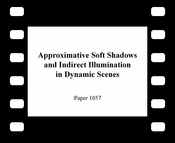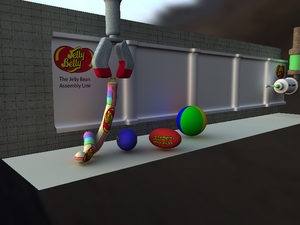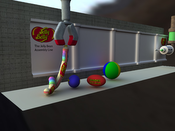Information
- Publication Type: Journal Paper (without talk)
- Workgroup(s)/Project(s):
- Date: October 2008
- Journal: Computer Graphics Forum
- Number: 8
- Volume: 27
- Pages: 2154 – 2168
- Keywords: global illumination, precomputed radiance transfer, soft shadows
Abstract
We present a method for rendering approximate soft shadows and diffuse indirect illumination in dynamic scenes. The proposed method approximates the original scene geometry with a set of tightly fitting spheres. In previous work, such spheres have been used to dynamically evaluate the visibility function to render soft shadows. In this paper, each sphere also acts as a low-frequency secondary light source, thereby providing diffuse one-bounce indirect illumination. The method is completely dynamic and proceeds in two passes: In a first pass, the light intensity distribution on each sphere is updated based on sample points on the corresponding object surface and converted into the spherical harmonics basis. In a second pass, this radiance information and the visibility are accumulated to shade final image pixels. The sphere approximation allows us to compute visibility and diffuse reflections of an object at interactive frame rates of over 20 fps for moderately complex scenes.Additional Files and Images
Additional images and videos
 video:
Short video demonstration of our method.
video:
Short video demonstration of our method.
Additional files
 paper:
Pre-print of the full journal paper.
paper:
Pre-print of the full journal paper.
Weblinks
No further information available.BibTeX
@article{guerrero-2008-sli,
title = "Real-time Indirect Illumination and Soft Shadows in Dynamic
Scenes Using Spherical Lights",
author = "Paul Guerrero and Stefan Jeschke and Michael Wimmer",
year = "2008",
abstract = "We present a method for rendering approximate soft shadows
and diffuse indirect illumination in dynamic scenes. The
proposed method approximates the original scene geometry
with a set of tightly fitting spheres. In previous work,
such spheres have been used to dynamically evaluate the
visibility function to render soft shadows. In this paper,
each sphere also acts as a low-frequency secondary light
source, thereby providing diffuse one-bounce indirect
illumination. The method is completely dynamic and proceeds
in two passes: In a first pass, the light intensity
distribution on each sphere is updated based on sample
points on the corresponding object surface and converted
into the spherical harmonics basis. In a second pass, this
radiance information and the visibility are accumulated to
shade final image pixels. The sphere approximation allows us
to compute visibility and diffuse reflections of an object
at interactive frame rates of over 20 fps for moderately
complex scenes.",
month = oct,
journal = "Computer Graphics Forum",
number = "8",
volume = "27",
pages = "2154--2168",
keywords = "global illumination, precomputed radiance transfer, soft
shadows",
URL = "https://www.cg.tuwien.ac.at/research/publications/2008/guerrero-2008-sli/",
}


 paper
paper